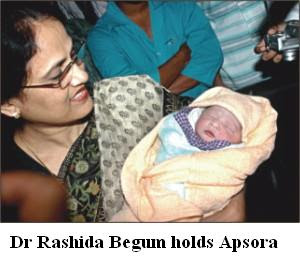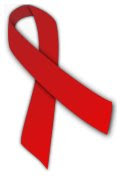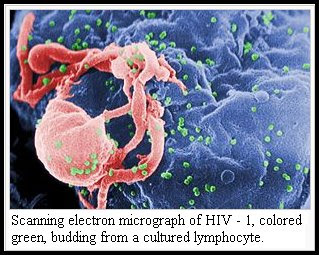Opsora, the first frozen embryo baby of Banglad esh?
esh?
2:15pm, September 19, 2008, Dhaka; a baby girl born named Opshora, becomes the first child born from frozen embryo IVF in Bangladesh. All the media and journalist crowded around the Modern Hospital where she born by cesarean. She born after the five years waiting of Afzal-Salma couple and also assure many couples who lost all hopes after the failure of general infertility treatment. Thanks to Dr Rashida Begum, the doctor behind this groundbreaking success. Opshora borns 24 years after the first ever birth of a baby from a frozen embryo in Australia in 1984. The first such baby in Asia was born in National University Hospital in Singapore in 1987.
Now take a glimpse to the technical background. IVF is a technique where the egg cell collected from the mother’s uterus, fertilized outside by father’s sperms in petridis containing appropriate culture medium and when fertilization is confirmed, transferred back in to mother’s uterus. Then why freeze them? The answer is FSH and other hormonal treatments used prior the collection of egg cells disturbs the normal estrus cycle of mother whereas establishment of the embryo in the uterus requires a sound ovarian and estrus conditions. So the fertilized embryos are cultured and preserved in the liquid nitrogen at 196 degree centigrade until they are transferred to the mother’s womb.
So long it was not an extraordinary story, because those who have the slightest information about the IVF or test tube baby knows that, it is an well practiced and almost routine work in many countries of the world. Wait viewers, story didn’t ends yet! do you know who first gave this idea of frozen embryo first, are you sure about the historical background of this technique. I suspect not! Now I will tell you another glorious story of some Bangali scientist.
Subhas Mukhopadhyay, a forgotten bangali pioneer in the field of IVF was the architect of first test tube baby (Durga) of India. He did this with the assistance of biochemical engineer Sunit Mukhopadhyay. The three major invention they did, while doing this are –
1. Physiologist Robert Edward who was the creator of first test tube baby, uses “laparoscopy to collect the egg cells, without treating the patient with FSH. Subhas wses FSH that increase the number of eggs in a single estrus, hence increase the probability of pregnency.
2. Subhas avoid laparoscopy, instead he conduct a method to reach the uterus through the vagina.
3. The most unique invention he did is that, Robert Edward transfer the fertilized embryo in the same estrus. Here Subhas and Sunit show there luminosity. They transfer the embryo in the subsequent estrus. Major problems they faced to do this were, need of a low temperature (-20°C), and appropriate culture medium. As they have no normal refrigerator, or even cryostat, Sunit invent a technique to reduce the temperature gradually (critical for cells viability) by mixing dry-ice in ethyl alcohol bath at the same amount at 1 min time interval. When it reached the appropriate temperature they transferred the embryos to the liquid nitrogen. This technique they invented, is still widely used throughout the world with some mechanical substitution and modifications however.
Finally I would like to say Opshora is not the first success in this field of frozen embryo IVF. Who knows how many Subhas or Sunit have been forgotten from the history. If we have been shown proper respect to these researchers and their knowledge may be we would not have to wait so long for one Opshora. May be many couples like Afzal-Salma would have got their smile back little earlier. Though in late I hope this practice will become established in Bnagladesh.



